The Urgency of Protecting Endangered Species
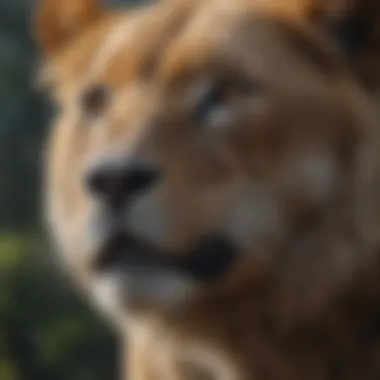
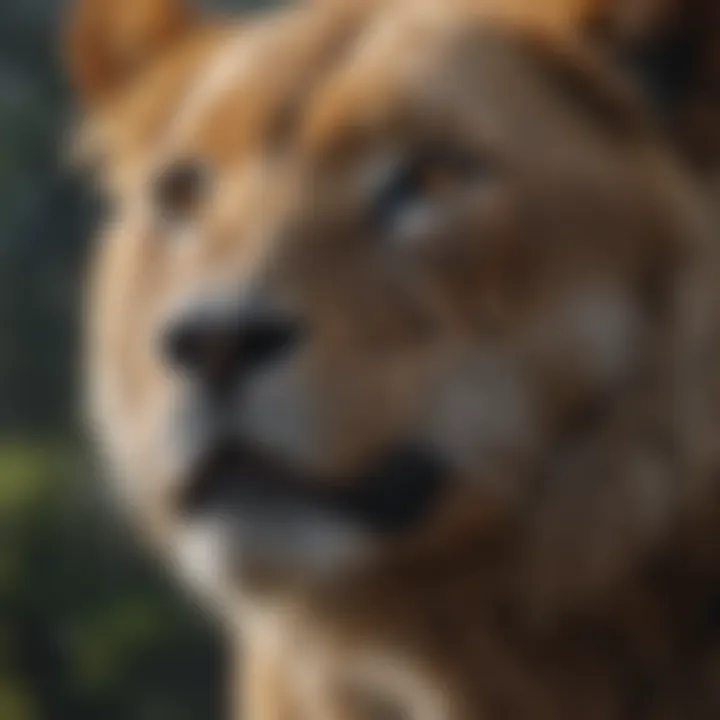
Overview of the Topic
Conservation of animals is a pressing issue in our contemporary world. As species face increasing threats from habitat loss, climate change, and poaching, understanding the dynamics of animal endangerment is crucial. This section introduces the fundamental aspects of animal conservation and its overall significance.
The natural world is richly diverse, encompassing millions of species that play unique roles in maintaining ecological balance. However, rapid urbanization, industrialization, and agricultural expansion have disrupted these delicate systems. As a result, many animals are declining at an alarming rate, leading to an urgent need for conservation initiatives. Without intervention, the extinction of certain species will have profound and far-reaching consequences not only for ecosystems but also for human well-being.
Current Status and Challenges
The current state of animal conservation is precarious. Recent data indicates that over one million species are threatened with extinction, primarily due to human activities. Urban sprawl fragments habitats, making it difficult for species to find food and mates. Moreover, climate change jeopardizes entire ecosystems, with many animals unable to adapt to shifting conditions.
Threats to wildlife encompass various factors, including:
- Pollution: Contaminants find their way into ecosystems, affecting food sources and animal health.
- Invasive Species: Non-native species disrupt local food webs, often outcompeting native wildlife.
- Illegal Wildlife Trade: The poaching and trafficking of animals for profit further exacerbate decline.
Addressing these challenges requires a coordinated effort among governments, NGOs, and local communities who are crucial to implementing practical conservation strategies.
Sustainable Solutions
To counteract these threats, sustainable solutions must be prioritized. Several effective conservation strategies showcase how proactive measures lead to positive outcomes. For instance:
- Protected Areas: Establishing wildlife reserves helps safeguard critical habitats, allowing animal populations to recover.
- Restoration Projects: Efforts to rehabilitate damaged ecosystems can enhance biodiversity and stability.
- Community Involvement: Engaging local populations in conservation efforts ensures sustainable resource use, benefiting both wildlife and people.
In regions like Madagascar, community-based conservation programs have seen marked success. Locals are incentivized to protect their natural resources, which has led to increased populations of endangered species, such as the lemur.
Impact and Importance
The impact of declining animal populations on ecosystems can be catastrophic. Each species plays a role, whether as predators, prey, or pollinators. When they vanish, the balance can tip, leading to ecosystem collapse. Moreover, biodiversity is vital for resilience against environmental changes and diseases.
Conservation efforts are not merely about saving animals; they are about preserving the planet for future generations. By maintaining healthy ecosystems, we ensure clean air, water, and food supplies. Therefore, it is imperative that every individual understands the importance of their contribution to conservation, fostering a culture of sustainability that can lead to meaningful change.
The fight for conservation is not just an environmental issue; it is a profound moral imperative.
In summary, the necessity of animal conservation transcends species' survival. It involves a holistic approach aimed at rejuvenating ecosystems, enhancing biodiversity, and fostering sustainable practices that benefit all life on Earth.
Understanding Endangerment
Understanding the concept of endangerment is crucial in addressing the ongoing crisis faced by many animal species. This section delves into the definition and the classification of endangered species. Gaining clarity on what it means for a species to be endangered highlights the critical situation many organisms are encountering and emphasizes the urgency of conservation efforts.
Definitions of Endangered Species
An endangered species is defined as a species that is at risk of extinction due to various factors, such as habitat loss, poaching, or climate change. The International Union for Conservation of Nature (IUCN) has established a Red List, which categorizes species at different levels of risk. Categories include:
- Critically Endangered: facing extinction in the wild in the immediate future.
- Endangered: not critically endangered but still facing a high risk of extinction.
- Vulnerable: likely to become endangered in the near future.
These definitions are vital for conservationists and policymakers to prioritize efforts effectively and allocate resources to species that need the most urgent intervention.
Criteria for Classification
The classification of endangered species is grounded in specific criteria, which take into account factors like population size, geographic range, and trends in population decline. The IUCN uses several criteria to assess the level of risk:
- Population reduction: A notable decline in numbers over a specified timeframe.
- Geographic range: The extent of habitat determined to affect a species’ survival directly.
- Population size: A small population can result in increased vulnerability to extinction.
- Probability of extinction: Assessing the likelihood that a species will vanish within a certain period.
Understanding these criteria is essential. It allows stakeholders to formulate effective conservation strategies tailored to each species' specific circumstances, ultimately aiming to reverse negative trends and move toward recovery.
Statistics on Endangered Animals
Understanding the statistics on endangered animals is crucial for several reasons. These figures not only reflect the current state of biodiversity but also underscore the urgent action needed to mitigate ongoing threats to wildlife. Data helps inform policies, conservation efforts, and public awareness. By examining specific numerical trends, organizations and individuals can strategize effectively, prioritizing resources and initiatives to safeguard vulnerable species.
In this section, we will focus on two pivotal aspects: the global trends in animal populations and the specific species most at risk.
Global Trends in Animal Populations
The decline in animal populations globally is alarming. According to the World Wildlife Fund's (WWF) Living Planet Report, there has been an average species decline of 68% between 1970 and 2016. This statistic powerfully illustrates the scale of biodiversity loss. The report documents various ecosystems, from freshwater to terrestrial, all showing significant degradation. These trends indicate that human activity, such as deforestation, urbanization, and pollution, is a principal driver of decline.
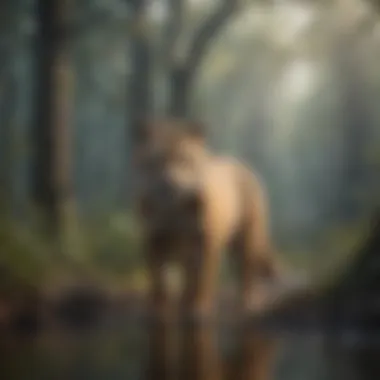
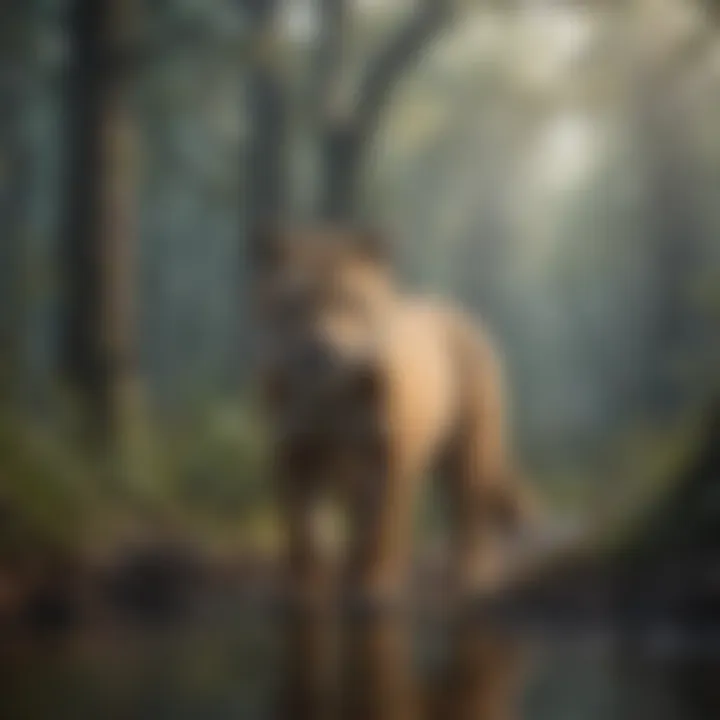
One can categorize the areas most affected:
- Freshwater ecosystems: Freshwater species have decreased by an astonishing 83% since 1970.
- Terrestrial biomes: These show a more moderate drop, yet they still reflect a worrying 40% decline.
- Marine life: Marine populations have seen a 36% decrease, raising concerns for ocean health.
These alarming trends not only pose a threat to the species involved but also disrupt ecosystem functions, which can affect human prosperity.
Species Most at Risk
Certain species are facing extinction more acutely than others, often highlighted in conservation reports. Some notable examples of these highly threatened species include:
- Amur Leopard: With around 100 individuals left in the wild, it is among the rarest large cats.
- Vaquita: This small porpoise is on the brink of extinction, with fewer than 30 individuals worldwide.
- Sumatran Orangutan: Habitat loss and illegal poaching have reduced its population to about 14,000.
- Javan Rhinoceros: This species numbers around 76 in Ujung Kulon National Park, making them critically endangered.
Conservationists emphasize that focusing efforts on these species can help achieve broader goals in biodiversity recovery. Not only do these animals play significant ecological roles, but their disappearance could also signal severe disruptions to nature’s balance.
"Conserving endangered species goes beyond the animals themselves; it encompasses the preservation of ecosystems and the services they provide to humanity."
In summary, the statistics shared here reveal a troubling reality for global biodiversity. With data as our guide, informed, targeted action can emerge, facilitating a more sustainable future for both wildlife and humans.
By understanding the global trends and identifying the species most at risk, conservationists can create effective strategies. This understanding enhances global efforts to address the ongoing crisis in animal conservation.
Drivers of Endangerment
Understanding the drivers of endangerment is crucial to address the ongoing crisis affecting countless species. This section delves into the fundamental causes behind animal endangerment, enabling conservationists and environmentalists to devise effective solutions. The major drivers include habitat loss, climate change, illegal wildlife trade, and pollution. Each factor contributes significantly to the decline of various species, and comprehending their implications can guide future mitigation strategies.
Habitat Loss and Fragmentation
Habitat loss is a leading cause of species endangerment. As human populations expand, natural habitats are increasingly altered or destroyed for agriculture, urban development, and resource extraction. When ecosystems suffer fragmentation, animal populations become isolated. This isolation hampers gene flow, leading to inbreeding and reduced genetic diversity. Species such as the Amur leopard face such critical threats. Without substantial connections between habitats, the survival of many species hangs in the balance.
Climate Change Impacts
Climate change poses a significant risk to animal populations globally. Rising temperatures, altered precipitation patterns, and melting ice caps create undue stress on ecosystems. Animals struggle to adapt to these rapid changes, resulting in shifting migration patterns and spawning seasons. The plight of polar bears serves as a stark example. Their reliance on sea ice for hunting seals illustrates how climate-induced changes directly affect survival rates. As climate pressures intensify, the urgency to implement effective adaptation strategies grows.
Illegal Wildlife Trade
The illegal wildlife trade further complicates the fight for species conservation. Poaching and trafficking threaten iconic animals like elephants and rhinos due to the high demand for their ivory and horns. This trade often fuels organized crime and destabilizes communities. The loss of these animals not only affects biodiversity but also disrupts ecological balance. International efforts such as the Convention on International Trade in Endangered Species aim to alleviate this crisis, yet enforcement remains a challenge.
Pollution and Its Effects
Pollution is an insidious driver of endangerment that often goes unnoticed. Chemical pollutants, plastics, and other waste products infiltrate ecosystems, adversely affecting wildlife. Endangered species like the California condor suffer from lead poisoning due to ingesting spent ammunition. Water pollution disrupts the reproductive systems of aquatic organisms, leading to declines in fish populations crucial for maintaining healthy aquatic ecosystems. Addressing pollution requires collaboration among governments, industries, and communities to ensure cleaner environments for all species.
"Confronting these drivers of endangerment requires a concerted effort from all stakeholders involved in conservation systems."
Effects of Animal Decline
The decline of animal populations carries significant implications for both the environment and human society. Understanding these effects is imperative to realize the urgency behind conservation efforts. Animals play crucial roles in their ecosystems, maintaining the structure and functioning of these environments. Their loss can lead to cascading effects, resulting in the destabilization not only of biological communities but also our own living conditions.
Biodiversity and Ecosystem Function
Biodiversity is essential for the resilience of ecosystems. Each species contributes to ecological processes, providing stability and function. When one species disappears, it can disrupt food chains and habitats, leading to further declines. For instance, predator-prey relationships are vital for controlling populations of various species. If a predator species goes extinct, the prey population can explode, leading to overgrazing and habitat destruction.
Conversely, the presence of diverse species often enhances productivity. Different species utilize various resources and niches within an ecosystem. This diverse exploitation can lead to increased resilience against environmental changes. Studies show that ecosystems with higher biodiversity are better at recovering from disturbances such as droughts or infections. The extinction of any species jeopardizes this stability, making conservation of all species essential.
Human Health Implications
The decline in animal populations has direct and indirect impacts on human health. Many animals serve as crucial buffers in controlling disease. For example, predators can help keep populations of disease-carrying organisms, such as rodents and insects, in check. A decrease in predators can lead to an increase in these disease vectors, elevating the risk of zoonotic diseases—those that cross from animals to humans.
Moreover, many medical advances derive from wildlife. Numerous pharmaceutical products have origins in animals. A loss of biodiversity could limit future discoveries that might lead to cures for diseases. This underlines the intricate interconnection between wildlife health and overall human well-being.
Economic Consequences
The economic impact of animal decline is multifaceted, affecting industries such as tourism, agriculture, and fisheries. Ecotourism relies heavily on wildlife. Declining animal populations can deter tourism, leading to loss of revenue and employment in regions dependent on this sector. Moreover, communities that rely on hunting or fishing may find their resources dwindling, impacting food security and livelihoods.
Agriculture also suffers from reduced pollinator populations, such as bees. These animals are critical for many crops. A decrease in their numbers can lead to lower yields, thus amplifying food scarcity and driving up prices. Implementing conservation strategies can not only protect wildlife but also ensure economic stability for communities impacted by these declines.
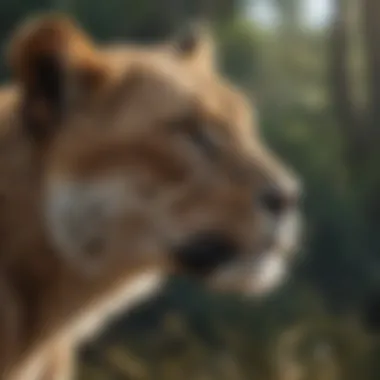
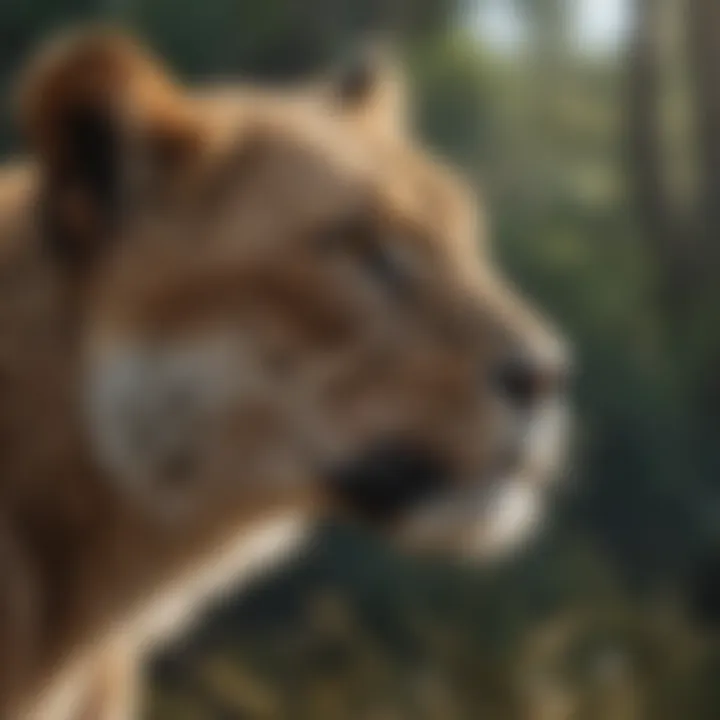
In summary, the effects of animal decline transcend mere numbers. They threaten biodiversity, undermine public health, and create significant economic challenges. Each of these elements highlights the necessity for immediate conservation action to avert a more profound crisis.
Conservation Efforts
Conservation efforts are crucial in combating the ongoing crisis facing endangered species. These initiatives focus on safeguarding biodiversity and restoring ecosystems. The importance of conservation can be seen in how it helps maintain ecological balance. Without targeted actions, many species face imminent extinction, which can lead to significant shifts in ecosystems. The primary goal is to provide a framework that encourages not only policy changes but also public awareness and engagement in protecting wildlife.
International Agreements and Treaties
International agreements and treaties play a fundamental role in conservation efforts. They offer structured approaches and frameworks that nations can adopt to protect endangered species. Notable examples include the Convention on International Trade in Endangered Species of Wild Fauna and Flora (CITES) and the Convention on Biological Diversity (CBD).
Such treaties aim to regulate and monitor trade practices that could harm species and their habitats. They also provide incentives for collaborative conservation initiatives between countries, fostering a sense of shared responsibility.
Countries that participate in these agreements often commit to stringent measures protecting specific species and their ecosystems. Compliance is essential, as it not only influences national conservation policies but also promotes global environmental stewardship.
Protected Areas and Reserves
Protected areas and reserves are essential for safeguarding biodiversity. These territories provide safe havens for endangered species, limiting human interference. National parks, wildlife reserves, and marine protected areas are examples where conservation can flourish. They are designed to preserve the ecological integrity of ecosystems while enabling human enjoyment and education.
Establishing protected areas ensures that critical habitats are shielded from exploitation. Successful management requires collaboration between governments, local communities, and NGOs. By jointly managing these spaces, stakeholders can effectively monitor wildlife populations and habitat conditions.
Community Involvement in Conservation
Community involvement in conservation cannot be overstated. Local populations are often the first line of defense against threats to wildlife. Engaging communities ensures that conservation efforts are relevant and sustainable. When local people have a stake in the health of their environment, they are likelier to participate in protective measures.
Education is pivotal in this regard. By informing communities about the importance of regional fauna and flora, they become empowered to protect their local ecosystems. Programs that integrate traditional knowledge and modern conservation practices often yield the best results.
Furthermore, incentives for the local population can drive effective conservation. For example, ecotourism can provide financial benefits, creating a vested interest in maintaining biodiversity.
Ultimately, successful conservation hinges on collaboration among international bodies, governments, and local communities.
Role of Technology in Conservation
Technology has emerged as a crucial ally in the battle against the decline of endangered species. The integration of advanced tools and methodologies can significantly enhance conservation efforts. In particular, technology provides both precision and scalability in monitoring animal populations, assessing their habitats, and implementing effective conservation strategies. Utilizing these technological solutions not only improves data accuracy but also facilitates collaborative approaches among various stakeholders.
As we explore the role of technology, we will examine specific elements such as remote sensing, monitoring systems, and genetic technologies that have redefined the landscape of conservation practices. Each of these elements brings notable benefits but also poses unique considerations that must be addressed for optimal effectiveness.
Remote Sensing and Monitoring
Remote sensing has transformed how conservationists track and analyze wildlife populations. It involves collecting data from satellite images or aerial surveys, providing a broad view of the habitat conditions and the status of endangered species. This method is particularly advantageous due to its non-invasive nature, allowing researchers to gather information without disturbing fragile ecosystems.
Some benefits of remote sensing include:
- Habitat Mapping: Identifying critical habitats and understanding the geographical spread of various species to assist in targeted conservation efforts.
- Population Monitoring: Assessing animal counts and migration patterns over vast areas that would otherwise be impossible to survey on foot.
- Real-Time Data: Offering timely updates and information that help in immediate decision-making processes to address emerging threats.
However, ready access to reliable satellite data is essential. There can be limitations in image resolution that affect data accuracy. Further, training personnel to analyze and interpret the data is critical. The successful application of remote sensing hinges on balancing technological advancement with human expertise.
Genetic Technologies in Conservation
Genetic technologies play a pivotal role in modern conservation strategies. By studying the genetic makeup of endangered species, scientists can create more informed recovery plans. These technologies help in understanding genetic diversity, which is crucial for ensuring the long-term survival of populations.
Key aspects of genetic technologies include:
- Biodiversity Analysis: Evaluating the genetic variation within and between populations to determine resilience and adaptability to environmental changes.
- Breeding Programs: Facilitating selective breeding to enhance genetic diversity in captive populations, which may improve survival when reintroduced into the wild.
- Disease Resistance: Identifying genetic traits that confer resistance to diseases, thus enhancing the health of populations in the wild.
While genetic technologies offer many benefits, ethical considerations must also be addressed. The implications of manipulating genetic materials carry risks that require thorough examination and consensus within the scientific community.
In summary, technology’s role in conservation is indispensable, marking a shift towards more effective, data-driven strategies to combat animal endangerment. By leveraging remote sensing and genetic technologies, conservationists can make substantial strides towards protecting our planet's biodiversity.
The Role of Education and Awareness
Education serves as a cornerstone in the movement towards effective animal conservation. Without a solid understanding of the issues faced by endangered species, proactive measures are challenging to implement. Awareness empowers individuals to take action, spreading knowledge about the delicate balance in ecosystems and the critical role animals play within it. The integration of environmental education into school curricula ensures that the younger generation grows up with a strong appreciation for wildlife. This can lead to a more informed populace that recognizes the importance of maintaining biodiversity.
Additionally, public campaigns and resources are vital for reaching broader demographics. Conservation initiatives can only thrive when the public is informed about the threats to wildlife, ranging from habitat loss to illegal wildlife trade. Public education campaigns are effective in influencing attitudes and behaviors that support conservation efforts.


"Education is the most powerful weapon which you can use to change the world." — Nelson Mandela
Importance of Public Education
Public education plays a critical role in fostering understanding about conservation. It raises awareness of the current state of endangered species and their ecosystems. Through educational programs, communities become more invested in local wildlife and conservation initiatives.
Several key benefits arise from effective public education:
- Informed Decision-Making: Individuals learn to make decisions that positively impact the environment.
- Behavioral Change: Education can influence behaviors that contribute to conservation practices.
- Community Involvement: Knowledge leads to increased participation in volunteer activities aimed at wildlife protection.
Moreover, collaboration with schools, community organizations, and local governments can enhance the reach and effectiveness of educational initiatives. For instance, implementing workshops and seminars can engage the public and provide valuable insights into real-world conservation issues.
Engaging the Youth
The involvement of youth is essential for the future of conservation. Young people are tomorrow’s leaders, decision-makers, and advocates. By engaging them in conservation efforts, we instill a sense of responsibility towards nature and wildlife.
Various methods can be employed to engage youth effectively:
- Experiential Learning: Programs that involve hands-on activities, such as wildlife monitoring or habitat restoration, can create lasting connections with nature.
- Social Media Campaigns: Platforms like Facebook and Reddit can be leveraged to promote conservation stories, making them relatable and engaging.
- School Programs: Integrating conservation topics into educational curricula can inspire students’ interest in environmental issues.
Ultimately, the goal is to cultivate a generation that values and protects wildlife. Engaging youth is not just about education; it is about fostering global citizens who understand the significance of protecting biodiversity. This can produce long-lasting change in societal attitudes towards conservation.
Future Outlook for Endangered Species
The future outlook for endangered species is critical in understanding conservation efforts. It encapsulates the potential for recovery, highlights ongoing threats, and reflects the balance we must maintain with nature. This section focuses on the conditions needed for the rebounds of various species and the obstacles that can hinder their resurgence. By examining these elements, we can gain insights into what is necessary to improve species’ chances for survival.
Predictions for Population Recovery
The potential for population recovery among endangered species is shaped by several factors, including habitat restoration, legal protection, and public awareness. Crucially, successful conservation programs show that when resources are dedicated to preserving habitats, many species can rebound. For instance, species such as the American Bald Eagle and the Grey Wolf have demonstrated measurable recovery rates after intervention efforts.
In the coming years, we can expect technologies such as genetic engineering and advanced monitoring methods to further enhance conservation strategies. Population recovery predictions look promising when the following factors align:
- Increased funding for conservation: More financial resources can result in better implementation of critical habitat protections.
- Community engagement: Local communities involved in conservation often lead to more sustainable practices.
- Innovative conservation techniques: From wildlife corridors to advanced reproductive technologies, these tools can be integral in boosting population numbers.
However, recovery will not be uniform across species. Variations in reproductive rates and adaptability to environmental change can significantly impact individual success.
Challenges Ahead
Despite the hopeful outlook, numerous challenges remain that need addressing to aid endangered species. Some of these challenges include:
- Continued habitat destruction: Urbanization and agriculture continue to encroach on wildlife habitats. As natural areas shrink, species have fewer options to thrive. Additionally, habitat connectivity is often disrupted, leading to genetic isolation.
- Climate change: Altering weather patterns and rising sea levels put further pressures on vulnerable species. Some animals may not adapt quickly enough to these dramatic changes in their environment, leading to extinction risks.
- Pollution: Contaminants in the air, soil, and water inhibit both the health of ecosystems and the species residing within them. Toxic substances can accumulate in food webs, affecting multiple generations.
"Intensive conservation strategies that ignore these challenges will falter. The integration of ecological, social, and economic factors is essential for success."
Looking ahead, the combination of proactive and reactive measures will define the trajectory of endangered species. Awareness at both individual and community levels plays a critical role. Understanding the complexities involved in species recovery can shape a more responsive and effective conservation landscape. With careful focus and innovation, we can promote diverse ecosystems and the species that rely on them.
Call to Action
The call to action is an essential component in addressing the pressing issues of animal conservation. This section serves to underscore the necessity for individuals and communities to take initiative in reversing the tide of species decline. Without a collective effort, conservation efforts risk being insufficient in maintaining biodiversity and protecting vulnerable habitats.
Recognizing the urgency of the situation can lead to informed participation. Individuals can make significant contributions through lifestyle changes, informed choices, and by leveraging their platforms to raise awareness. When awareness transforms into action, it engenders a powerful ripple effect, encouraging others to engage in conservation. It is particularly important to link local efforts to global objectives, highlighting how personal actions can impact larger conservation strategies.
Moreover, this collective activism not only fosters grassroots movements but also pressures policymakers to prioritize sustainability and wildlife protection. Ultimately, our concerted efforts can create a more favorable environment for endangered species, motivating support for initiatives that protect their habitats and promote biodiversity.
"The greatest threat to our planet is the belief that someone else will save it." – Robert Swan
Ways Individuals Can Assist
Individual actions towards conservation can seem small but, collectively, they can lead to substantial change. Here are some practical steps:
- Reduce waste: Start practices such as recycling and composting. This minimizes landfill contributions and conserves natural resources.
- Support sustainable products: Opt for products that are certified as sustainable, such as clothing made from organic materials or seafood from responsible fisheries.
- Volunteer: Engage with local conservation organizations. Volunteering offers hands-on experience and facilitates direct contributions to conservation efforts.
- Advocate for wildlife: Use social media or community platforms to inform others about endangered species and conservation needs. Sharing articles or participating in campaigns can amplify key messages.
- Educate yourself and others: Read and share knowledge about endangered species and the importance of biodiversity. Understanding the broader environmental context enhances one's ability to effect change.
Implementing these steps contributes not only to personal responsibility but also to a global movement for conservation. Each action, however small, builds momentum towards broader shifts in behavior and policy.
Support for Conservation Organizations
Supporting established conservation organizations is another crucial aspect of addressing the crisis faced by many species today. Here are ways in which individuals can provide meaningful support:
- Monetary donations: Financial contributions allow organizations to fund critical projects and artificial breeding programs for endangered species. Organizations such as the World Wildlife Fund and the Wildlife Conservation Society rely heavily on these funds.
- Membership and sponsorship: Becoming a member or sponsor of a conservation group often provides ongoing support and resources for the organization’s efforts, enhancing their significant impact on ecosystems.
- Participate in events: Many organizations host events like clean-up days, awareness campaigns, and educational workshops. Engaging in these activities not only supports the organizations but also fosters community involvement.
- Promote organizational work: Sharing information about the projects and successes of conservation organizations can inspire others to get involved or to donate. Speaking at local events about their impact can significantly enhance visibility.
Supporting these organizations is vital as they often engage in nationwide and international efforts to protect endangered species. Moreover, their expertise in navigating complex ecological issues positions them as effective agents of change.



